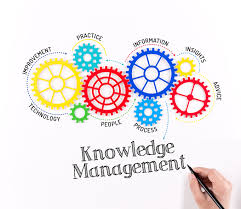
1. The emphasis on emotion and empathy of user would have a great impact, focus on experimentation and testing before scaling and confidence even in the face of uncertainty. Thus, buy-in for KM initiatives increases when adequate empathy has been shown to employees concerns and if participatory design elements have been used to come up with the knowledge management architecture and processes.
2. Design thinking includes a progressive approach to dealing with failure. Mistakes are treated as learning experience toward a final solution. That can help organizations by celebrating not just successes and best practices, but also failures as a source of learning. Many organizations have a repository of best practices.
3. In their haste toward project completion, many companies focus only on the results and final products. Design thinking allows for creation of extra levels of documentation along the project which may reveal new insights of value to subsequent project teams.
4. Through immersion and interaction, design thinking places a greater emphasis on conversations and thus uncovers deeper information about employees, customer and business partner expectations and aspirations. The use of customer personas also helps bring more holistic insight into the business modeling process.
5. By focusing first on minimum viable products and then full features, design thinking can help avoid features overload and large failed projects. Knowledge management can help in this regard in capturing best practices of frugal product and service development.
6. Design thinking and agile approach can be deployed right at requirements gathering stage and not just design and deployment stages. Organization can have conversations with users at the early stages and even help them question their understanding of the problems and solutions. Better alignment can be brought and lead to new ways of knowledge creation.
7. With its user centered design philosophy, design thinking brings about better interaction between a company and its employees and customers, particularly in an increasingly digital world where all kinds of assumptions are being made about customer's aspirations and problems. Organizations should work on improved formats of communication and knowledge sharing.
8. By repeatedly questioning basic assumptions behind problems, design thinking helps to structure problems in a more effective manner so that more appropriate solutions emerge. Knowledge management should include not only solving problems in a better and more efficient way, but also choosing which problems to solve.
9. Design thinking blends top-down and bottom-up approaches to problem solving, which can help overcome some problems in those KM initiatives that are top-down or led by higher levels of management without adequate factoring of users input or those initiatives where there is full users input with no management support.
10. Find the balance between design thinking and actual design. There are times when employees need to strictly adhere to established strategy, and there are times when fundamental operating assumptions should be questioned in light of changing circumstances and context. Thus the best practices certainly play a big role and design thinking can help come up with the best practices.
11. Design thinking is not just for designers or product developers. It has been used for better design of information portals, vision alignment in technology companies, more meaningful users experience, effective customer service, deeper users engagement in planning and collaboration on projects.
12. Design thinking is the key to innovation in many organizations. Involving users in the design project would also help user adoption of the knowledge management initiative.
A useful step-by-step approach for incorporating design thinking in knowledge management is captured via the “8 Is” framework: intent, insights, immersion, interaction, ideation, integration, iteration and intensification.
Intent to introduce design thinking ideas in knowledge management should be followed by deep research of users and customers information creation and information seeking behavior. Interaction with them will yield very helpful ideas which should be integrated and tested repeatedly until an effective design of knowledge management can be finalized and deployed.
Galaxy Consulting has 18 years experience in applying design thinking in knowledge management. Please contact us for a free consultation.
 RSS Feed
RSS Feed
